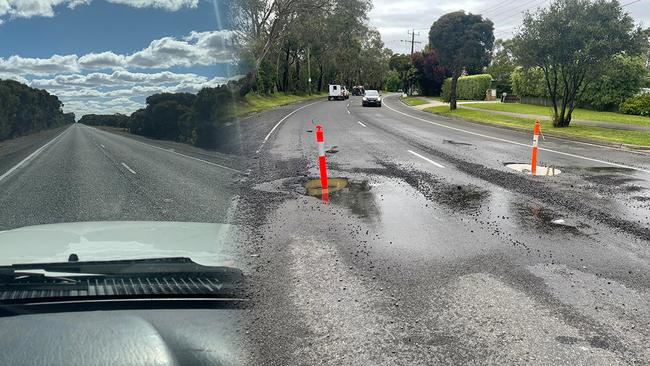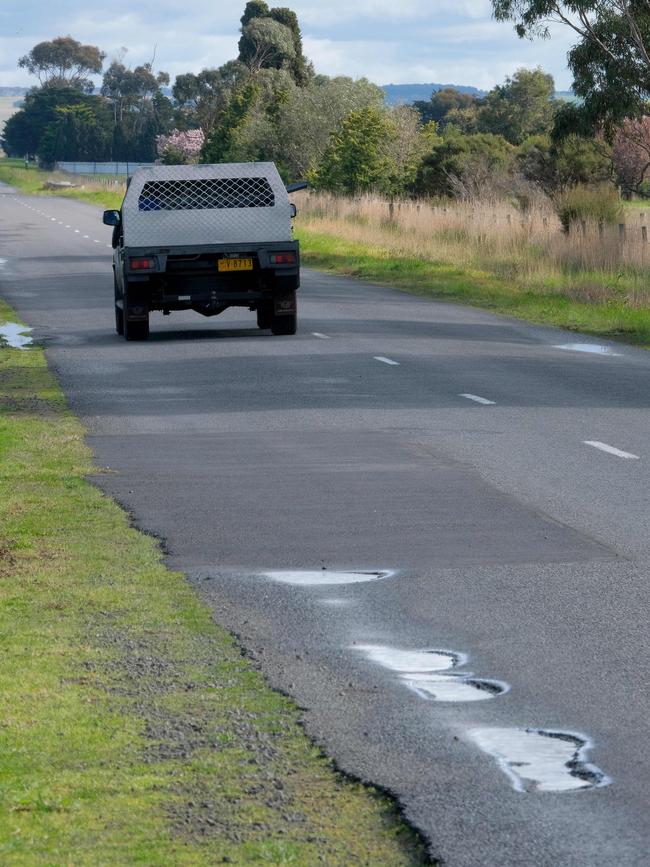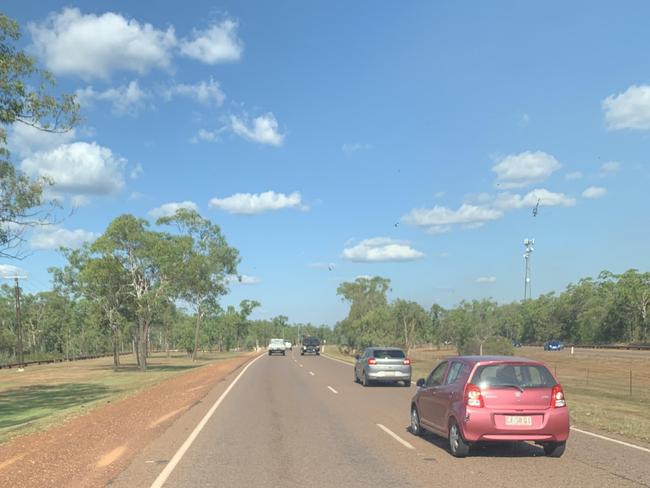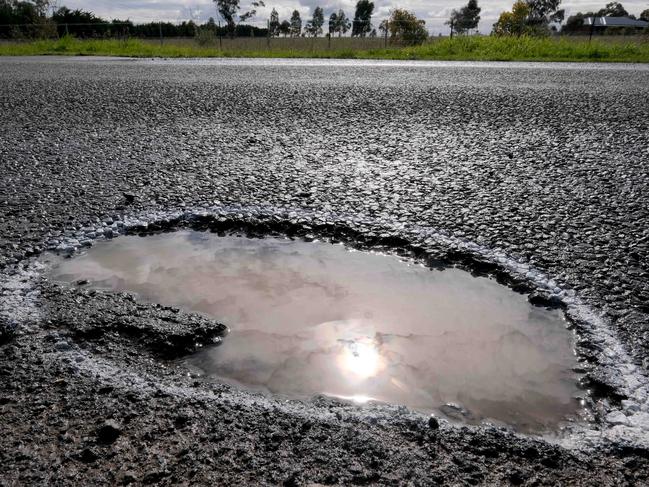‘I didn’t realise how bad our roads were until I went through the rest of the country’: Grey nomads
Families, commuters and grey nomads are among those who have weighed in on which state has the worst roads in the country, with truckies reporting “the ride is terrible” once they cross the border into one.

Victoria
Don't miss out on the headlines from Victoria. Followed categories will be added to My News.
Families, commuters and grey nomads are among those who have weighed in on which state has the worst roads in the country, with truckies reporting “the ride is terrible” once they cross the border into Victoria.
The southern state, followed by New South Wales and Queensland are home to the nation’s worst roads, according to scores of News Corp readers who provided their views in comments, with South Australia and the Northern Territory getting a general thumb’s up.
Everyone from commuters trying to make their way to work and parents driving their kids to school and extra-curricular activities, to interstate truck drivers, farmers, grey nomads and footy fans were fed up with Victoria’s bad roads — with many claiming they were the worst in the country, opposition roads spokesman Danny O’Brien said.
“After the AFL gather around in Adelaide, there were complaints when people realised just how bad our roads were compared to South Australia’s. People rang radio stations and contacted me, asking ‘why is it so bad here when South Australia can build decent roads?’,” Mr O’Brien said.
“Grey nomads (travelling around the country with caravans), who regularly come back to my part of the world, say ‘God, I didn’t realise how bad our roads were until I went through the rest of the country’.


“And certainly truckies say the same, that the ride is terrible once you cross the border, whether it’s on the Hume coming in from Sydney or whether it’s on the Western Highway coming from Adelaide, the Princes Highway, and pretty much anywhere else. Those complaints are absolutely regular.”
A recent RACV poll on the state’s country roads received a record 7000 responses, “the largest response ever received to the survey”, which clearly showed the level of concern Victorians had with the state of their roads, RACV’s head of policy James Williams said.
The results of the survey are expected to be released shortly.
“RACV calls on federal and state governments to invest in regional road maintenance and upgrades, with safety as a priority. RACV is aware of the impact that safe and quality roads can have on preventing and minimising the consequences of car crashes and overall amenity of travelling on Victorian roads,” Mr Williams said.
“RACV advocates for regional Victorian roads to be improved to meet the standards outlined by the Australian Road Assessment Program (AusRAP). Those standards are a minimum of three stars on existing sections of the major highway network and a minimum of four stars on new sections.”
It said it was unable to comment on the quality of Victorian roads compared to interstate roads.
A Herald Sun investigation into why Victoria’s roads appeared worse than those in other states hit roadblock after roadblock, with Roads Australia referring questions to Austroads, which in turn referred the paper to the Victorian Department of Transport and Planning to speak on its “approaches to pavement design and maintenance”.

“This is not something Austroads is able to provide comment on,” a spokesperson said.
The Victorian Department of Transport has been contacted for comment.
Mr O’Brien said Victoria was experiencing a further reduction in the actual outputs of fixing roads.
“The government’s own surveys undertaken last year showed 91 per cent of (flood affected) roads in Victoria were in poor or very poor conditions — and that’s the result of a 45 per cent cut to the roads maintenance budget since 2020,” he said.
“Even in this year’s Budget we are seeing a further reduction in the actual outputs of fixing the roads. In regional Victoria, it’s literally a 96 per cent reduction in the level of maintenance being done this year, in 2024, compared to last year.”
Mr O’Brien said the view of many road builders and contractors he had spoken to over the past couple of years was that Victoria’s roads were not maintained or managed properly.

“We’re not doing the resealing that’s required regularly, we’re not grading the roadside to ensure the water can get away,” he said.
“And that’s reflected by how the government is now measuring how many potholes they’re filling, not how the roads are actually operating.
“They’ve got the performance measures all wrong, because how many potholes you have filled is a measure of failure, not a measure of success.”
A Victorian government spokesperson said it was “disappointing but not surprising” the state opposition “continue to misrepresent” Labor’s investment in road maintenance across the state.
“As part of the Victorian Budget 2024-25 we’re investing $964m into our road network – that’s more than $2.6m for each day,” a spokeswoman said.
The Premier’s Office said in a statement the Victorian Budget 2024-25 would see more than $964m invested into maintaining Victoria’s road assets in the next financial year, with this investment nearly double the average spend of $493m between 2010 and 2014.
What were previously considered once in a generation flood and extreme weather events were now commonplace, bringing record rainfall and inflicting unprecedented damage on Victorian roads, which was why Labor was investing an unprecedented $6.6bn over a decade to future-proof and strengthen the state’s roads, it said.
The 91 per cent of roads found to have been in poor condition following the October 2022 Victorian floods and quoted by the opposition were water-damaged roads and not representative of the Victorian road network generally, the government said.
RMIT road engineering and transport expert Dr Mohammad Saberian said a lot of research had been conducted into how to make roads stronger and more resilient through the use of recycled waste materials, including face masks.
Recycled plastics, tyres and coffee and woodchip biochar were other materials that could potentially be used to make Victorian roads more hard-wearing, Dr Saberian said.
“These recycled materials can be engineered to give high value to our roads,” he said.
“They can make our roads stronger, certainly.”
More Coverage
Originally published as ‘I didn’t realise how bad our roads were until I went through the rest of the country’: Grey nomads



